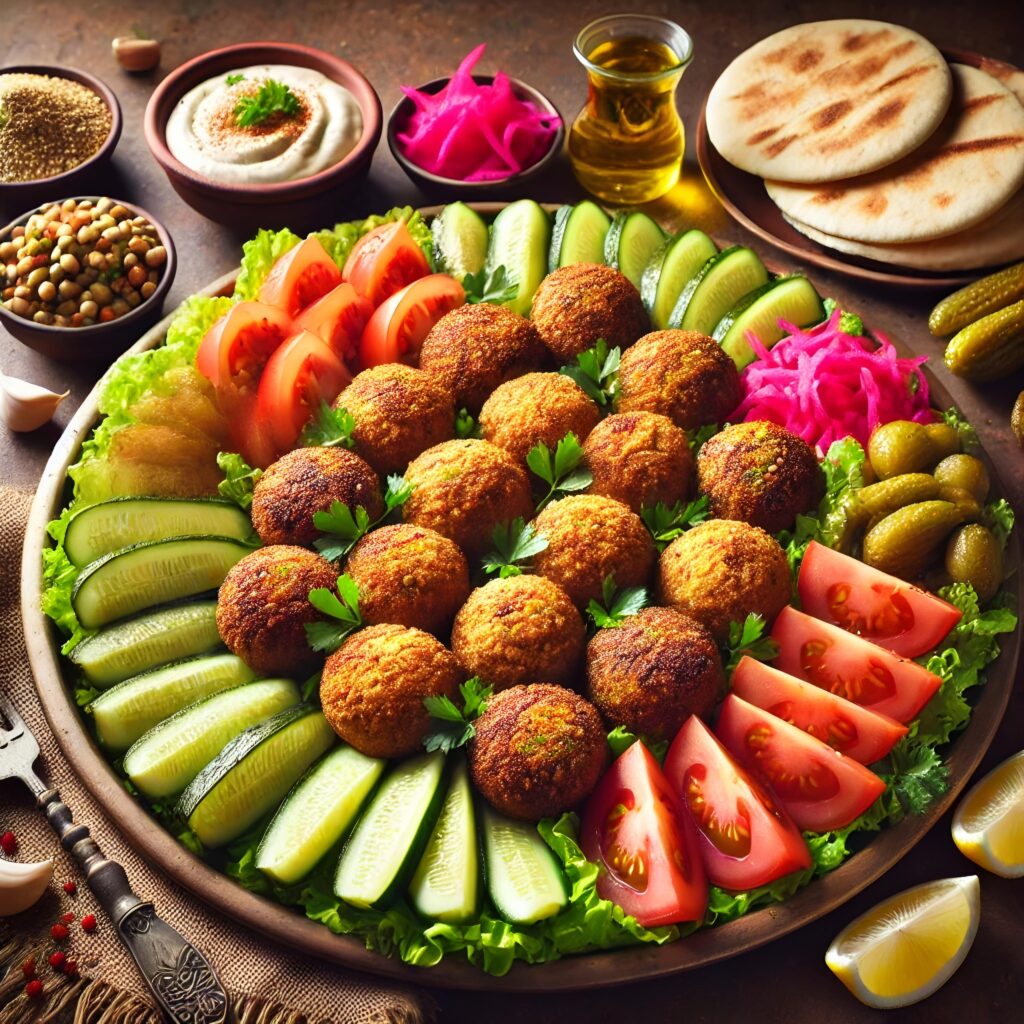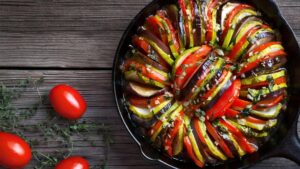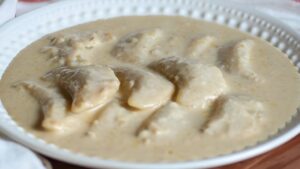Easy and Traditional Falafel Wrap Recipe

Falafel is a popular Middle Eastern dish made from ground chickpeas (or fava beans) and spices, deep-fried into crisp, golden patties or balls. While its origins are debated, it is a beloved street food across the Levant, Egypt, and other parts of the world, often served in pita bread with vegetables and drizzled with tahini sauce. Here’s a detailed guide on how to prepare traditional falafel, covering everything from soaking the chickpeas to assembling the perfect falafel wrap.
Ingredients
For the Falafel:
- Dried chickpeas(not canned): 1 ½ cups (250g)
- Onion: 1 medium, finely chopped
- Garlic: 3-4 cloves, minced
- Fresh parsley: 1 cup, finely chopped (about 1 small bunch)
- Fresh cilantro: ½ cup, finely chopped
- Ground cumin: 1 tablespoon
- Ground coriander: 1 tablespoon
- Baking powder: 1 teaspoon
- Salt: 1 teaspoon (adjust to taste)
- Black pepper: ½ teaspoon
- Cayenne pepper(optional): ¼ teaspoon for a bit of heat
- Ground cardamom: ¼ teaspoon (optional, for a more fragrant falafel)
- Sesame seeds: 1 tablespoon (optional, adds a lovely crunch)
- Flour: 2 tablespoons (or chickpea flour, for a gluten-free option)
- Vegetable oil: For frying (use an oil with a high smoke point like sunflower or grapeseed oil)
For Serving:
- Pita bread: Soft, fluffy pita or flatbread, ideally homemade
- Tahini sauce: ½ cup tahini, 2 tablespoons lemon juice, 1 garlic clove, water to thin, salt to taste
- Fresh vegetables: Tomato, cucumber, lettuce, red onion, pickles
- Pickled turnips(optional): For a traditional Middle Eastern touch
- Sumac(optional): A tangy spice to sprinkle over the vegetables
Preparation: Step-by-Step
1. Soak the Chickpeas
Falafel is traditionally made from dried chickpeas, not canned ones. Using dried chickpeas gives the falafel a better texture and flavor. This step is crucial, so don’t skip it!
- Rinse 1 ½ cups of dried chickpeas under cold water and place them in a large bowl.
- Cover the chickpeas with plenty of cold water (about 3-4 inches above the chickpeas). They will expand as they soak, so be sure to use a bowl large enough to accommodate this.
- Let the chickpeas soak overnight, for at least 12-18 hours. If you’re in a rush, you can soak them in hot water for 1-2 hours, but the texture won’t be as perfect.
After soaking, the chickpeas should have doubled in size. Drain them well and set aside.
2. Prepare the Falafel Mixture
Once your chickpeas are soaked and ready, it’s time to make the falafel mixture.
- In a food processor, add the drained chickpeas, chopped onion, garlic, parsley, and cilantro.
- Add the cumin, coriander, salt, black pepper, and cardamom (if using).
- Pulse the mixture until it has a coarse, grainy texture. Avoid over-processing it into a paste; you want some texture so the falafel holds up when fried.
- Scrape down the sides of the processor as needed. The mixture should stick together when pressed but should not be too wet or too dry.
Pro tip: If the mixture feels too crumbly, add a little water (1 tablespoon at a time). If it feels too wet, add a little more flour or chickpea flour to bind it.
3. Rest the Mixture
Once the falafel mixture is ready, transfer it to a bowl and mix in the baking powder and sesame seeds (if using). The baking powder helps the falafel puff up slightly when fried, making them light and fluffy inside.
- Cover the bowl with plastic wrap or a towel, and let the mixture rest in the fridge for about 30 minutes to 1 hour. This allows the flavors to meld and helps the falafel hold its shape better during frying.
4. Shape the Falafel
After the mixture has rested, it’s time to shape your falafel. You can form them into either balls or patties, depending on your preference. The traditional shape is a small ball, but patties may be easier to fry evenly.
- Use a falafel scoop (or two spoons) to form the mixture into balls or patties, about 1 ½ inches in diameter. You can also use your hands, but wet them first to prevent sticking.
- Place the formed falafel on a baking sheet lined with parchment paper, and continue until all the mixture is used.
Pro tip: If you’re making a large batch, you can freeze the formed falafel at this stage. Place them on a tray in the freezer, and once frozen, transfer them to a zip-top bag for future use.
5. Fry the Falafel
Traditionally, falafel is deep-fried, which gives it that signature crispy crust. However, you can also shallow-fry or bake them for a healthier version (though they won’t be as crispy).
- Heat about 2-3 inches of vegetable oil in a deep frying pan or pot to 350°F (175°C). Use a thermometer to ensure the oil is at the right temperature; too hot, and the falafel will burn outside before cooking through; too cold, and they’ll absorb too much oil and become greasy.
- Carefully drop the falafel into the hot oil, a few at a time, ensuring not to overcrowd the pan (which can lower the oil temperature).
- Fry for about 3-4 minutes, turning occasionally, until the falafel is golden brown and crispy on all sides.
- Remove with a slotted spoon and drain on a paper towel-lined plate. Repeat with the remaining falafel.
Pro tip: If you’re baking instead of frying, preheat the oven to 375°F (190°C), place the falafel on a greased baking sheet, and brush the tops with a little oil. Bake for 20-25 minutes, flipping halfway through.
Preparing the Tahini Sauce
Falafel isn’t complete without a drizzle of tahini sauce, which adds creaminess and a nutty flavor. Here’s a simple tahini sauce recipe:
- In a small bowl, whisk together ½ cup of tahini with 2 tablespoons of fresh lemon juice and 1 clove of minced garlic.
- Add 1-2 tablespoons of cold water, one at a time, until the sauce reaches your desired consistency (it should be pourable but not too thin).
- Season with a pinch of salt and adjust the lemon juice to taste. For a more Middle Eastern flair, you can add a pinch of ground cumin or sumac.
Assembling the Falafel Wrap
Now that your falafel is crispy and ready, it’s time to assemble the perfect falafel wrap.
- Warm the Pita Bread: You can warm your pita bread in the oven or on a skillet for a few minutes to make it soft and pliable.
- Add Fresh Vegetables: Slice up tomatoes, cucumbers, lettuce, red onions, and pickles. These add crunch and freshness to the wrap.
- Pickled Turnips: If you have pickled turnips on hand, they add an authentic, tangy bite. You can find them at Middle Eastern grocery stores or make them at home by pickling turnip sticks in a vinegar-brine with beets for color.
- Place the Falafel: Add 3-4 falafel balls (or patties) to the center of the pita bread.
- Drizzle with Tahini Sauce: Generously drizzle the tahini sauce over the falafel. You can also add hot sauce if you prefer a spicier kick.
- Finish with Sumac: Sprinkle a pinch of sumac over the vegetables for extra tanginess.
- Wrap and Serve: Fold the pita bread over the falafel and vegetables, wrap it tightly, and enjoy!
Tips for the Best Falafel
- Do not use canned chickpeas: The key to authentic falafel is using dried chickpeas. Canned chickpeas are too soft and waterlogged, leading to a mushy falafel that won’t hold together.
- Rest the mixture: Allowing the falafel mixture to rest before frying helps the flavors meld and improves the texture, making it easier to shape.
- Control the oil temperature: Use a thermometer to keep the oil between 350°F-375°F (175°C-190°C). Frying at too low a temperature will result in greasy falafel, while too high a temperature will burn them.
- Customize the spices: Feel free to adjust the spice levels according to your taste. Add more cumin, coriander, or garlic for a more intense flavor, or throw in a pinch of cinnamon or allspice for a deeper warmth.
Here are some frequently asked questions (FAQs) based on the falafel recipe:
1. Can I use canned chickpeas instead of dried chickpeas?
- Answer: It’s best to use dried chickpeas for authentic falafel. Canned chickpeas are too soft and waterlogged, which makes the falafel mixture too mushy and causes them to fall apart when frying. Soaking dried chickpeas gives the falafel a firmer texture and better flavor.
2. How long should I soak the chickpeas?
- Answer: Soak the chickpeas for at least 12-18 hours in cold water. If you are short on time, you can soak them in hot water for 1-2 hours, but the texture might not be as ideal.
3. Can I make the falafel mixture ahead of time?
- Answer: Yes, you can prepare the falafel mixture and store it in the refrigerator for up to 2 days before frying. For longer storage, shape the falafel into balls or patties and freeze them.
4. How do I store leftover falafel?
- Answer: Leftover cooked falafel can be stored in the refrigerator for 3-4 days. To reheat, you can either fry them briefly or bake them at 350°F (175°C) for 10-15 minutes. You can also freeze cooked falafel and reheat directly from frozen.
5. Can I bake the falafel instead of frying?
- Answer: Yes, falafel can be baked for a healthier alternative. Preheat the oven to 375°F (190°C), place the falafel on a greased baking sheet, brush the tops with oil, and bake for 20-25 minutes, flipping halfway through.
6. How can I make falafel gluten-free?
- Answer: To make gluten-free falafel, substitute regular flour with chickpea flour or gluten-free flour. This will help bind the mixture without compromising texture.
7. Why is my falafel falling apart during frying?
- Answer: If the falafel mixture is too wet or crumbly, it might fall apart. Make sure to drain the chickpeas well after soaking and avoid over-processing the mixture. You can add a bit more flour or chickpea flour to bind the mixture better.
8. What oil is best for frying falafel?
- Answer: Use an oil with a high smoke point like sunflower oil, canola oil, or grapeseed oil. These oils can handle the high frying temperature without burning, ensuring crispy falafel.
9. Can I use an air fryer to cook falafel?
- Answer: Yes, you can use an air fryer to make falafel. Preheat the air fryer to 350°F (175°C) and cook the falafel for 12-15 minutes, flipping them halfway through. They won’t be as crispy as deep-fried falafel but are still a healthier option.
10. What spices can I add to enhance the flavor?
- Answer: Common spices include cumin, coriander, and black pepper. You can also add a pinch of cayenne for heat, ground cardamom for fragrance, or even cinnamon or allspice for a warm, earthy flavor.
11. Can I make falafel with fava beans instead of chickpeas?
- Answer: Yes, in some parts of the Middle East (especially Egypt), falafel is made with fava beans instead of chickpeas. The preparation process is similar, but the flavor and texture will be slightly different, with fava beans giving a smoother texture.
12. Can I freeze uncooked falafel?
- Answer: Yes, you can freeze uncooked falafel. After shaping the falafel balls or patties, place them on a tray in the freezer. Once frozen, transfer them to a zip-top bag. When ready to cook, fry them directly from frozen, adding a minute or two to the cooking time.
13. How can I ensure my falafel is crispy on the outside and soft on the inside?
- Answer: To achieve the perfect texture, make sure the oil is at the right temperature (around 350°F or 175°C) when frying. Fry in small batches, and don’t overcrowd the pan, which can lower the oil temperature and result in greasy falafel.
14. What can I serve with falafel?
- Answer: Falafel is typically served with pita bread, fresh vegetables (tomato, cucumber, lettuce), tahini sauce, and pickled vegetables (especially pickled turnips). You can also serve falafel in a salad or grain bowl with hummus and tabbouleh.
15. How do I know when the falafel is cooked through?
- Answer: The falafel will be golden brown and crispy on the outside when fully cooked. It should take about 3-4 minutes per batch. The inside should remain soft and green due to the herbs.






